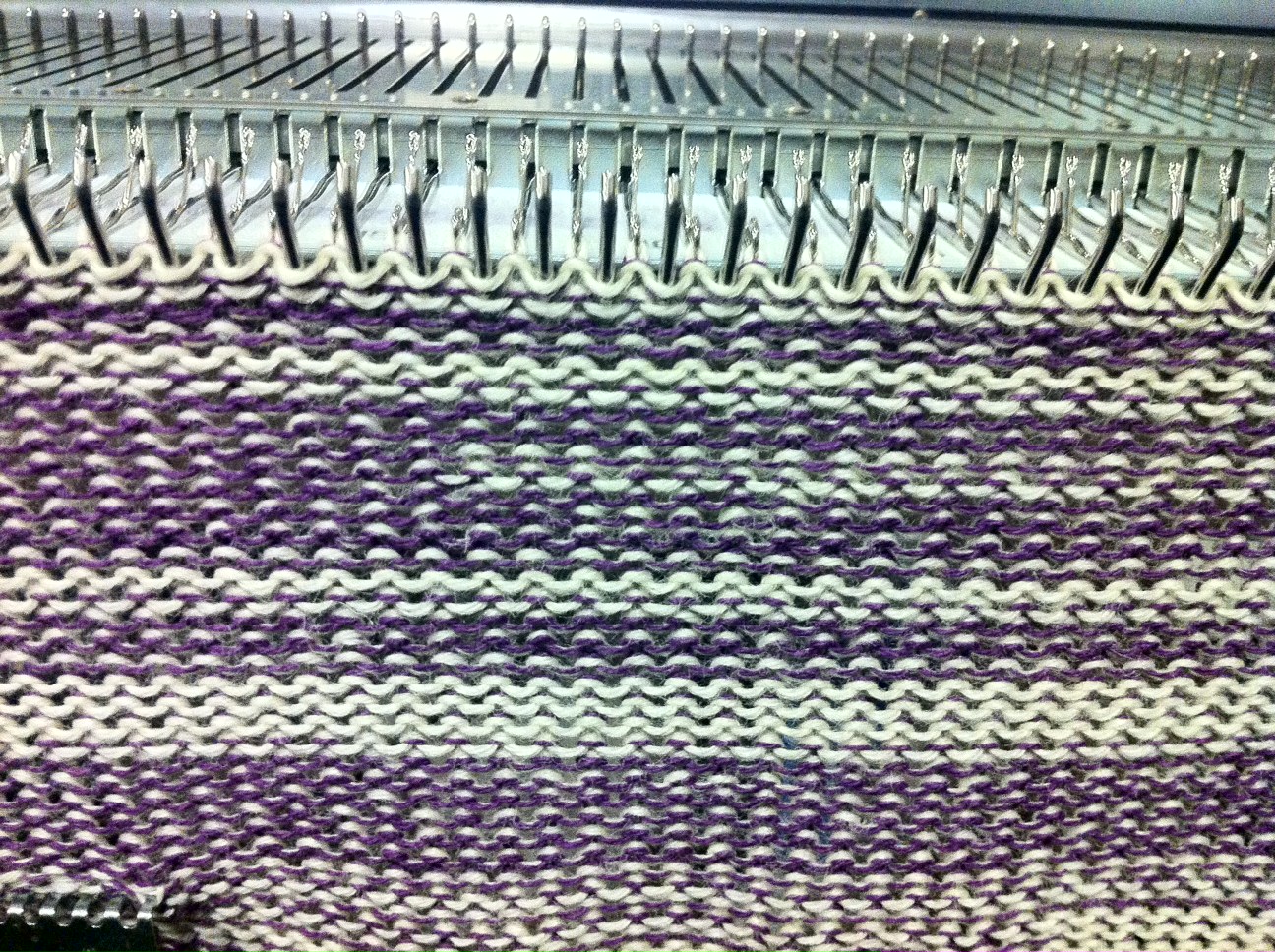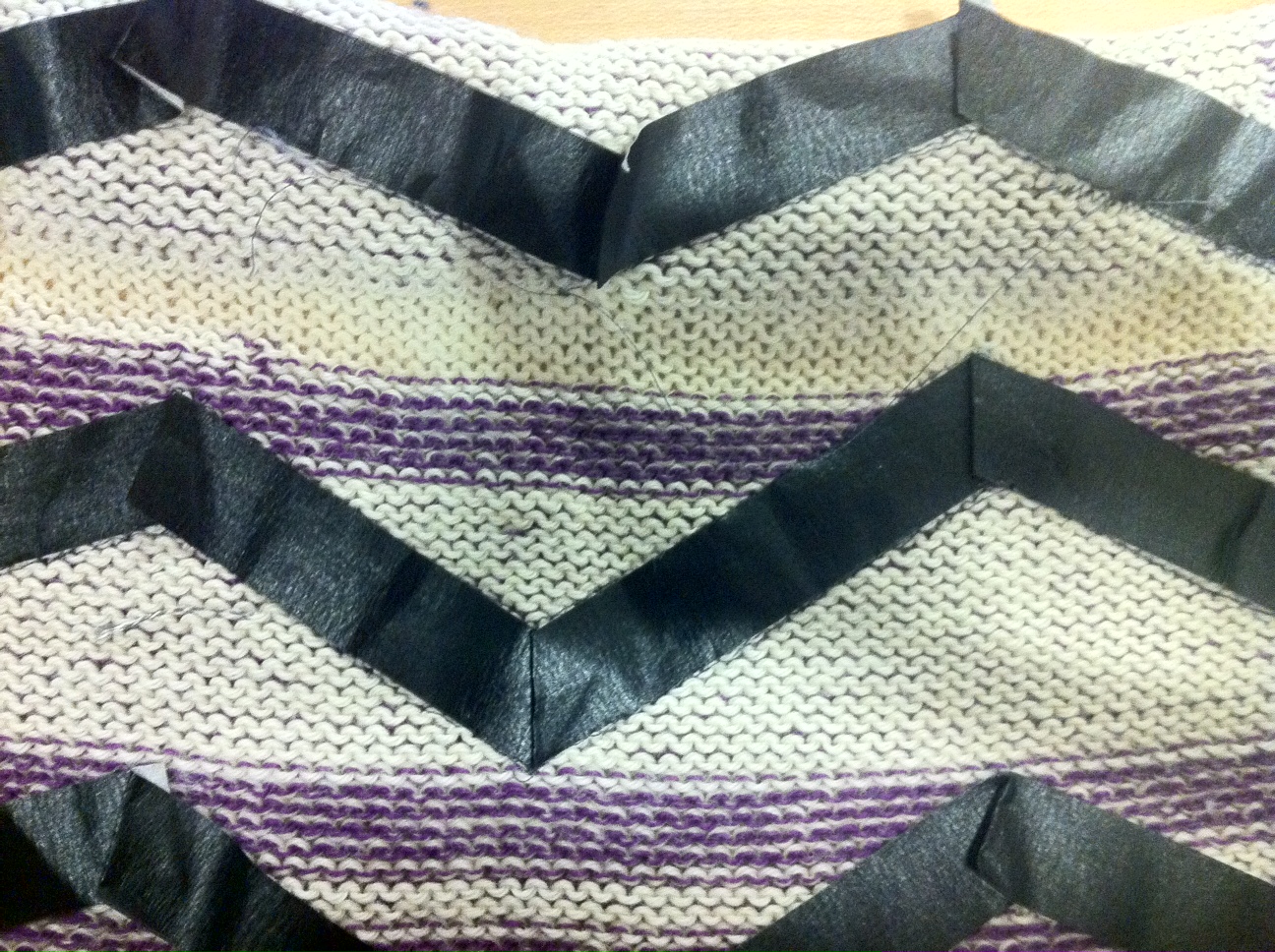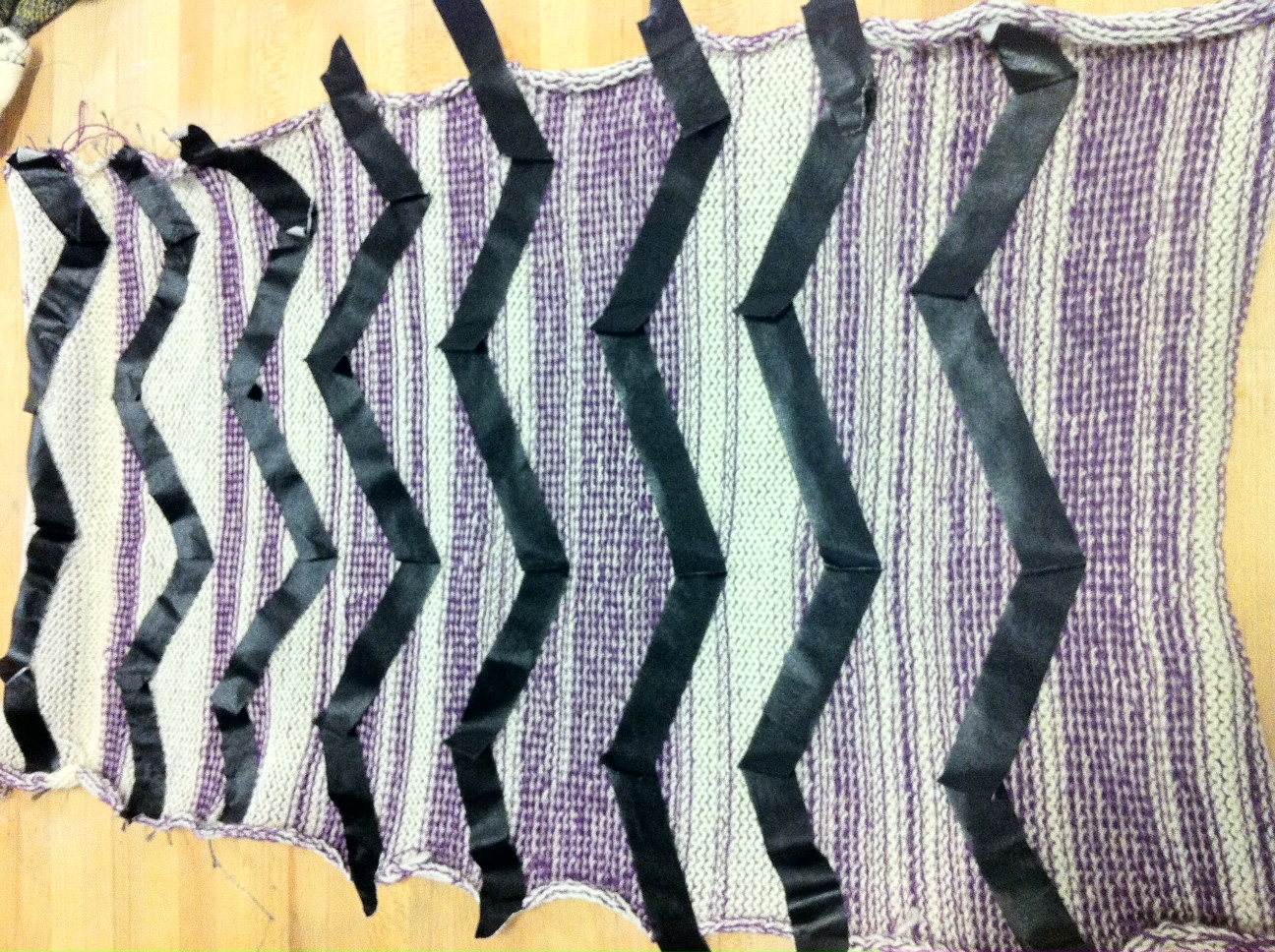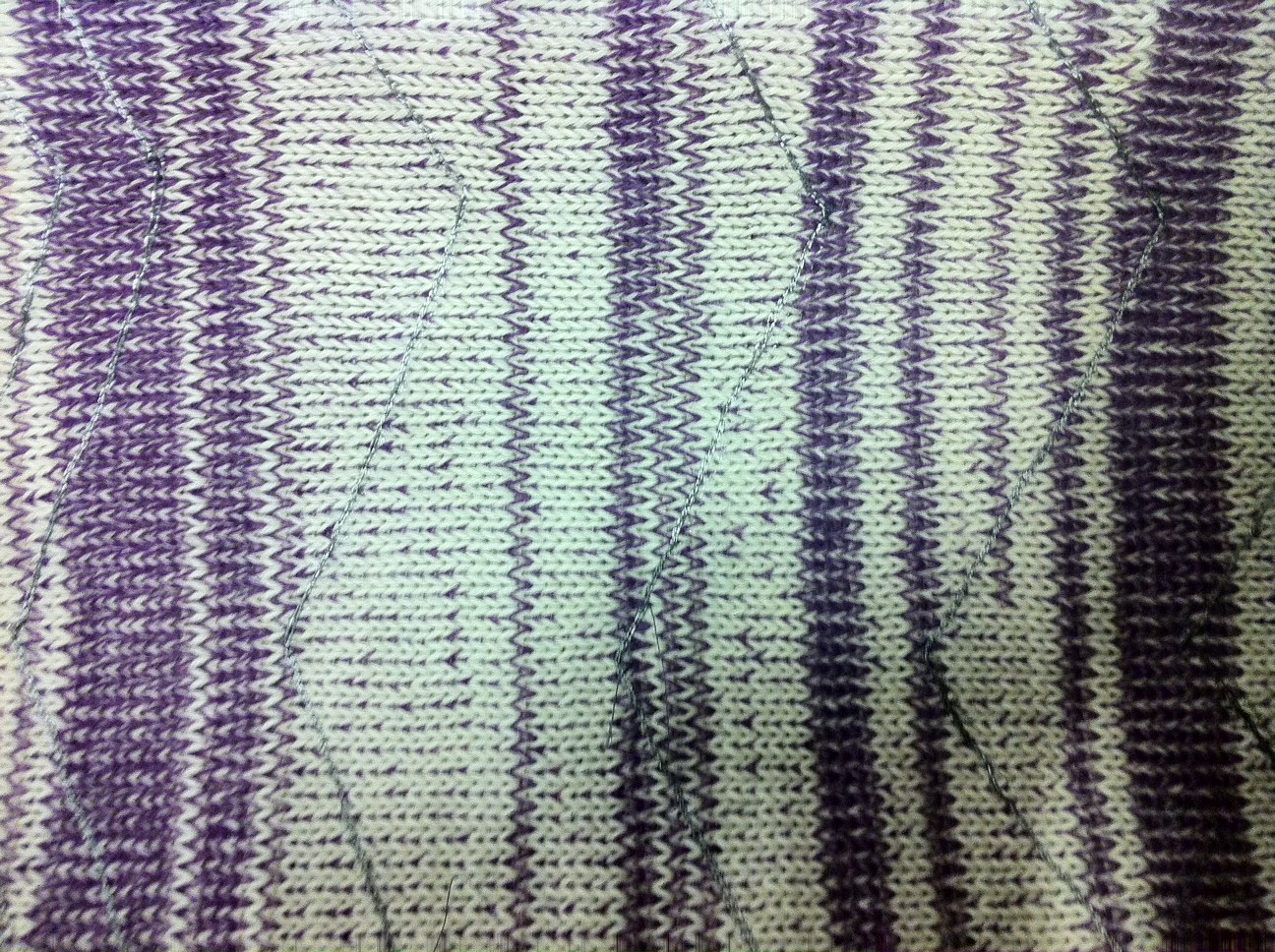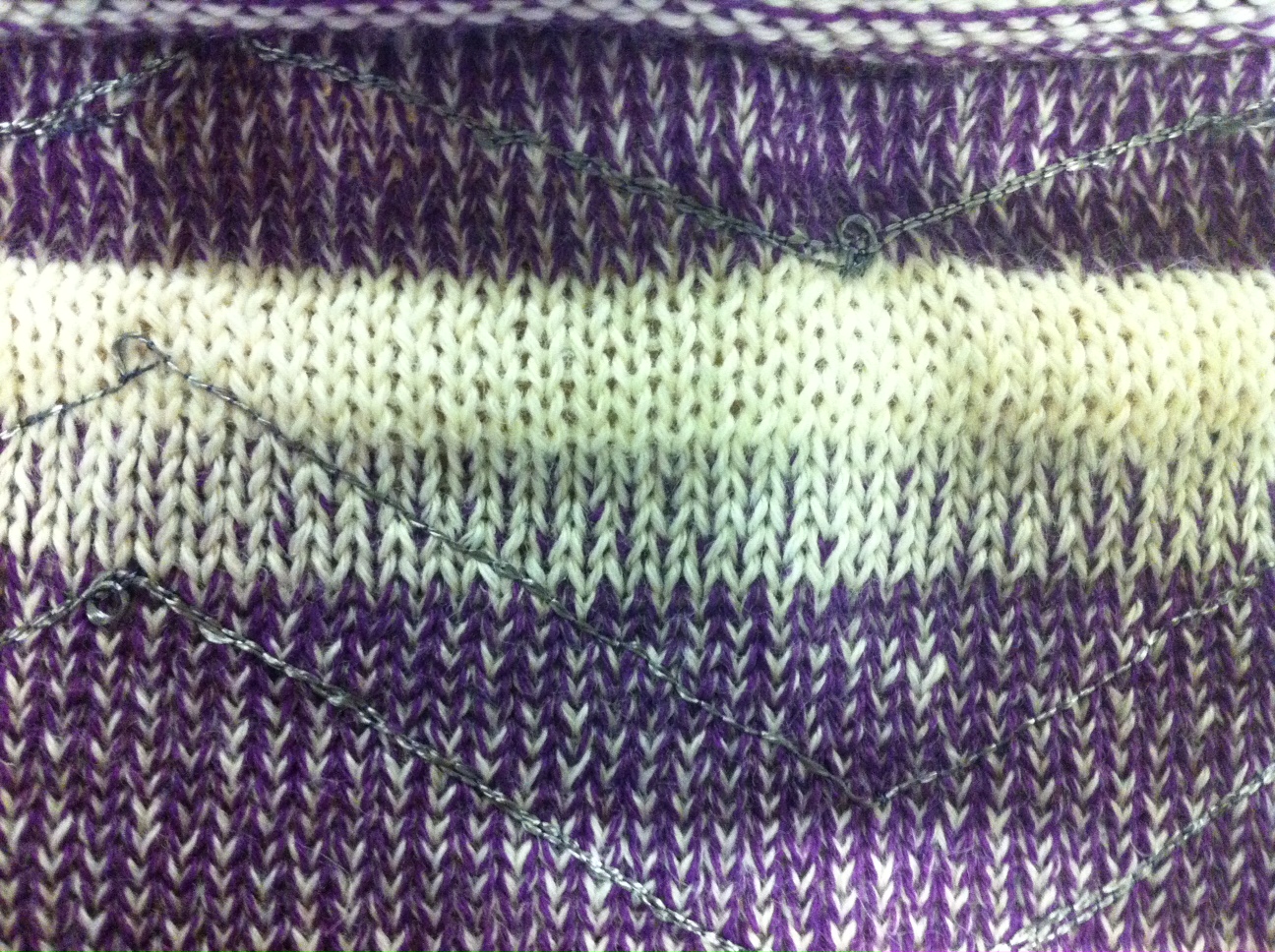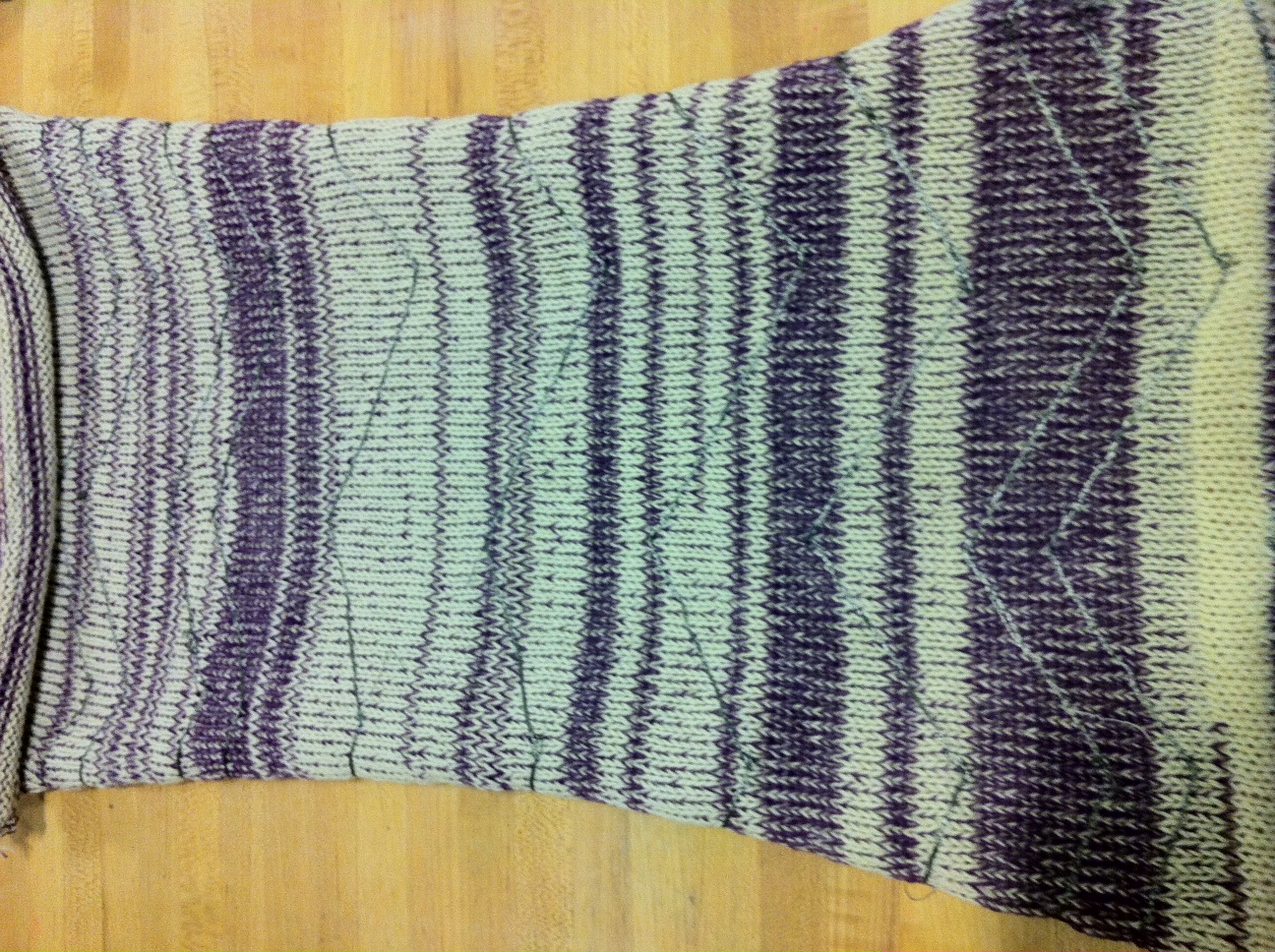Thermochromic Felted Fabric with Steel.
by N.Tari
Dena Molnar & Nicole Tariverdian
GOALS:
We decided to use this project to help us test and prepare for the final projects we are currently working on. The goal was to create a dyed felted fabric that changes color in specific areas and patterns in a more controlled way than our previous experiments. By using an arduino, an additional power supply, and circuits that contain a mosvet, resistor we are able to control specific areas of the fabric using different pins on the arduino. Our hope for the near future and for our final project is to be able use out side data (specifically weather and temperature) to control these changes.
PROCESS:
Knitting
The first step to creating this fabric was to knit a large sample on the knitting machine. This sample was knit with a light weight cotton yarn (purple) and a heavy wool yarn (white). The differences in the yarn weights allowed for the yarns to variegate creating an interesting striped pattern.
Sewing and Felting:
Before felting the piece lines of steel were sewn into the fabric in a zig zaz pattern. Before sewing the lines were mapped out with tape as channels on the fabric.
After the sewing was completed the fabric was thrown into the wash to felt.
Dyeing
The next step was dyeing the fabric. Instead of vinegar like we used here we used lemon juice. After some research on natural dyes we determined a different process to use. This process involved first boiling the fabric with a fixer (lemon juice) then rinsing the fabric and letting it soak in the thermochroomic dye overnight. After soaking it was hung in the sun to dry . Dye Process
This process seemed to take much better than the vinegar dye used for the first experiment in dyeing yarns. It also does not smell as pungent and seems more wash-fast.
CHALLENGES:


